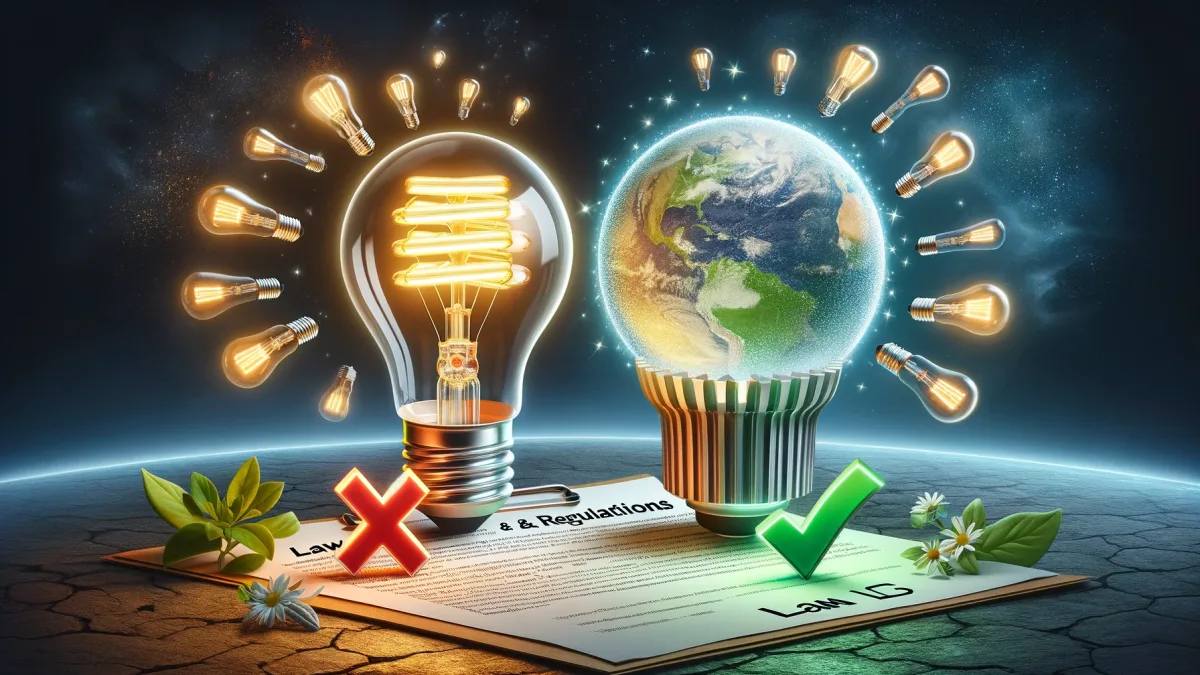Hey there! So, you’ve heard the buzz and you’re wondering if the humble incandescent bulb, the one that Thomas Edison famously brought to commercial viability, is now on the wrong side of the law in the U.S., right? Well, you’re not alone in this curiosity. With the rise of energy-efficient lighting solutions like LEDs and CFLs, there’s been quite a bit of chatter about the fate of incandescent bulbs. Let’s dive into the nitty-gritty and shed some light on the situation.
The Legal Landscape: Regulations, Not Bans
First off, it’s crucial to understand the distinction between outright bans and regulations. The U.S. government, particularly through the Department of Energy (DOE), has indeed introduced regulations that set higher energy-efficiency standards for bulbs. These standards, evolving over the years, aim to reduce energy consumption and promote environmental sustainability.
The Energy Independence and Security Act (EISA) of 2007 was a game-changer in this regard. It laid down new efficiency standards that many traditional incandescent bulbs couldn’t meet. However, here’s where it gets interesting: EISA didn’t make incandescent bulbs illegal. Instead, it pushed for bulbs that consume less power for the same amount of light, effectively phasing out less efficient models.
Misconceptions Cleared: Not Illegal, Just Evolved
So, are incandescent bulbs illegal? The short answer is no. What the regulations did was effectively push the market towards more energy-efficient bulbs. Manufacturers responded by innovating and improving incandescent technology to comply with these new standards. As a result, you can still find incandescent bulbs on the shelves, but they’re just more energy-efficient than their ancestors.
The Incandescent Bulb Today: Alive and Well
Modern incandescent bulbs, including halogen bulbs, are designed to meet or exceed regulatory standards. These bulbs offer the warm glow that many homeowners love, along with improved energy efficiency. So, if you’re a fan of the incandescent’s ambiance, you’re in luck. You can enjoy that cozy, warm light while being kinder to the planet and your wallet.
Why the Shift Matters: A Brighter, Greener Future
The push towards energy-efficient lighting is more than just regulatory red tape. It’s about combating climate change, reducing energy consumption, and saving consumers money in the long run. Lighting accounts for a significant portion of household energy use, so switching to more efficient bulbs can have a substantial impact on overall energy savings.
LED and CFL: The Efficient Contenders
While we’re on the topic, it’s worth mentioning the benefits of LED (Light Emitting Diode) and CFL (Compact Fluorescent Lamp) bulbs. These alternatives use a fraction of the energy of even the most efficient incandescent bulbs and last much longer. Transitioning to these options is an excellent way to reduce your carbon footprint and energy bills.
Navigating the Change: Tips for Consumers
If you’re looking to make the switch or just want to understand your options, here are a few tips:
- Check the Label: Look for the Lumens rating to understand brightness and the Energy Star certification for efficiency.
- Consider the Color: LEDs and CFLs come in various color temperatures, allowing you to mimic the warm light of incandescents if desired.
- Think Long-Term: While energy-efficient bulbs have a higher upfront cost, their longevity and lower energy usage offer savings over time.
Conclusion: Embracing Progress Without Losing the Glow
To wrap up, no, incandescent bulbs aren’t illegal. The landscape of household lighting is simply evolving, with a strong push towards more sustainable, energy-efficient options. As we navigate these changes, it’s an opportunity to embrace innovation while still enjoying the warm, inviting ambiance that lighting brings to our homes.
Remember, every small step towards energy efficiency helps in the larger battle against climate change. By staying informed and making conscious choices, we can all contribute to a brighter, greener future. So next time you’re bulb shopping, remember that it’s not about the end of the incandescent bulb but its transformation and the exciting alternatives available to us.









Leave a Reply